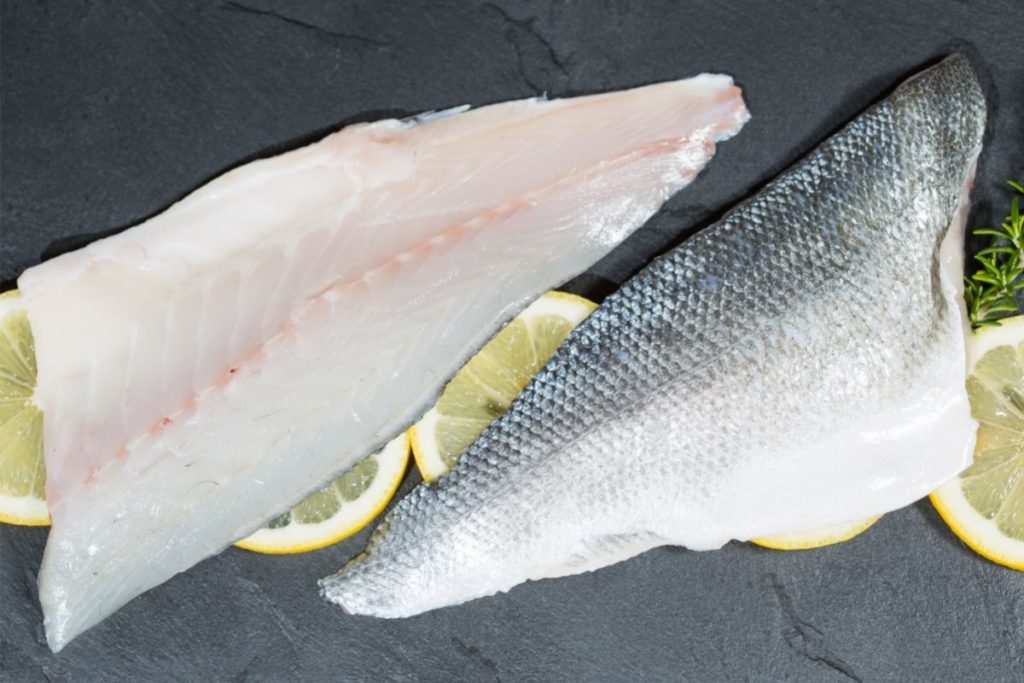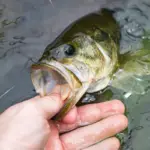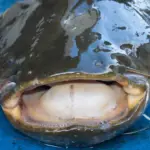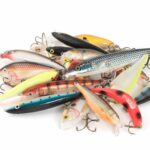Unless you’ve done it before, filleting a bass can be a tricky process. With proper cleaning, gutting, and filleting, you will be able to cook smallmouth bass – or any other favorite fish – quickly.
By cleaning these incredible game fish, you are able to eat and enjoy your catch rather than simply throwing it back.
In this article, we have gathered information from experts on how to properly prepare and take care of your food to prevent any foodborne illnesses.
As we have spent years catching and eating bass all over the United States, we’ve distilled all of our experience into a few quick steps to help you learn how to prepare this tasty fish.
The Importance of Gutting Bass
The innards of bass are full of unique liquids, smells, and bacteria that you do not want to introduce to your meat. When you gut your bass before cutting it up, you are protecting yourself from bacteria such as salmonellae and escherichia coli.
A fish may burst from gas buildup in its belly if it is left with its guts in. As a result, stomach acid and other unwanted innards will spread throughout the rest of the fish, rendering it inedible, discolored, and smelling.
Thus, gut your fish as quickly as possible and keep it in a cool place below 40 degrees Fahrenheit, such as an ice chest or refrigerator.
Required Equipment to Clean Bass
Most jobs are made more comfortable when the proper equipment is used. Before beginning any part of the cleaning process, gather your equipment.
You will need:
- Filet Knife: these flexible knives are used to cut through meat, bones, and skin. The sturdy grip gives you confidence when cutting. It is advisable to use a fillet knife that is longer than the height of the fish, usually between 8 and 10 inches long. Make sure the knife is always sharp. A dull knife will be quite frustrating when learning how to clean bass with a delicate touch.
- Cut-Resistant Glove: Fish are slimy, and bass is no exception. When you are filleting, it is difficult to keep still, so the right glove gives you extra grip and helps prevent cuts and scrapes from your knife or the fins of the fish.
- Cutting Board or Cleaning Station: When you are cutting raw meat, you need a clean place to keep it free of bacteria. Ideally, a cutting board should be able to be washed immediately after use to prevent cross-contamination with other foods you may be preparing. In terms of size, a larger cutting board is better. If you plan to do this often, there are tables made specifically for cleaning fish.
- Vacuum Sealer or Ziploc Bag: A vacuum sealer is the best way to preserve the taste and texture of the fish for an extended period of time in the freezer. But if it’s just going to be in the fridge for a few days, use a Ziploc bag.
- Trash Can: Guts, skin, and fish heads don’t need to make it to the dinner table. Make sure you have a trash can nearby for the extras.
- Running water: Cleaning sea bass or any other bass is a messy endeavor. Throughout the gutting process, you’ll need fresh running water to keep yourself, your equipment, and the fillets clean.
Once you’ve gathered all of the equipment and the fish, you’re ready to go!
The Step-By-Step Guide on How to Fillet a Bass Fish
The next time you go out fishing, you won’t have to throw back many bass. You’ll know exactly how to cut it up later on for a delicious meal. It does take time, patience, and an extra-sharp knife to learn how to fillet a fish. By following these steps closely, you’ll have two decent chunks of fish in just a few minutes.

Step 1: Scale the Bass
The video here covers the first two steps. It’s here that you’ll learn how to use a scaler and how to remove a bass’ guts. While some prefer to gut the fish before removing its head, the person in the video does it the other way around.
In addition to harboring a lot of bacteria, scales also have a fishy taste and texture. In order to get the best product, make sure you remove every single one. Initially, learning how to scale a bass is difficult, but with a little patience, it can be done.
Start by deciding where to scale the bass. Most anglers choose to scale outside because the scales go in every direction. Check your local regulations to see if you are allowed to clean the fish where you caught it. To keep the mess and smell from your house, it is highly recommended that you do that.
To scale the fish, place it on the cutting board and apply downward pressure with your left hand. Starting at the tail and moving toward the head, work the knife against the scales with your right hand.
As you scrape, the scales should fall off. Scales can be harder to remove near the gills and neck.
People usually use their fillet knives for this. Alternatively, you can use a butter knife or a special scaler. It is the friction and pulling of the object that removes the scales, not the sharpness.
When the scales are removed, run the fish under running water to ensure that all scales have fallen off.
Step 2: Gut the Bass
If you want to learn how to gut a bass, brush up on your fish anatomy first. It will give you more confidence when cutting it open.
The vent, a small hole near the anal fin, can be found on the belly of your bass when it’s on the cutting board. Using your knife, begin by cutting open the belly up to the jawbone.
You should only go deep enough to cut the skin layer, not the organs underneath. Use extra caution when cutting through the last inch or two.
This section will show you the innards, including the heart, liver, stomach, intestines, kidneys, and reproductive system. This is all contained within a thin sac.
With your knife, separate it from the internal cavity by scooping it out gently with your hands. Be gentle so nothing bursts.
Using a kitchen knife, gently separate the innards from the fish where they are attached, at the throat. Then, run the fish under cool water to rinse out any lingering innards.
Step 3: Remove the Bass Fillets
This video shows how to remove the fillets from the fish. It shows a person filleting the bass whole. As in the previous video, you can do it this way or after removing the head.
Filleting smallmouth bass is very similar to filleting other bass and bluegills. Start by placing your knife behind the pectoral fin and gills. Then, angle the knife towards the neck of the fish.
You should cut down to the pelvic fin and up to the top of the head.
Next, slice the top of the fish right next to its backbone with the tip of your knife. As you continue to cut, stay close to the backbone all the way to the tail fin.
Now follow the spine and rib cage to make the cut deeper into the meat. If you plan to remove the skin, do not separate the tail from the fillet.
Remove the skin by flipping the fillet so that it faces upward while keeping it attached to the tail. Place your knife at the base of the tail and slide it between the skin and the fillet. Slightly angle your knife as you glide it along. Then, you’ll have a skin-free fillet.
Then flip the fish over and repeat the process. In each lateral line of the bass fillet, you are likely to find between six and ten bones. Remove them gently with your fingers or tweezers. Alternatively, you can filet them out with your knife, although this will remove a fair amount of solid meat.
After that, rinse the clean meat with cold, running water before storing it.
Ensure that all entrails, fish heads, and skin are disposed of properly. If regulations allow, they can sometimes be thrown back into the lake or pond. Most of the time, they need to be thrown away with the trash.
The steps are applicable to all types of black bass, including largemouth and striped bass.
Final Thoughts
We hope that by demonstrating the simplest way to clean striped bass, we have shed some light on how you can get started cooking largemouth bass. Perfection of your technique takes time, so give yourself some grace when you figure it out.
- Do You Need An Indicator For Nymph Fishing? - November 16, 2023
- Fishing Safety Tips For Families - September 25, 2023
- What Is The Best Time To Night Fish At A Lake? - September 18, 2023






![Is Carp Good To Eat (Or Bad)? [Taste, Safe & Prepare] Is Carp Good To Eat](https://irvinelake.net/wp-content/uploads/2022/02/Is-Carp-Good-To-Eat-150x150.png)



